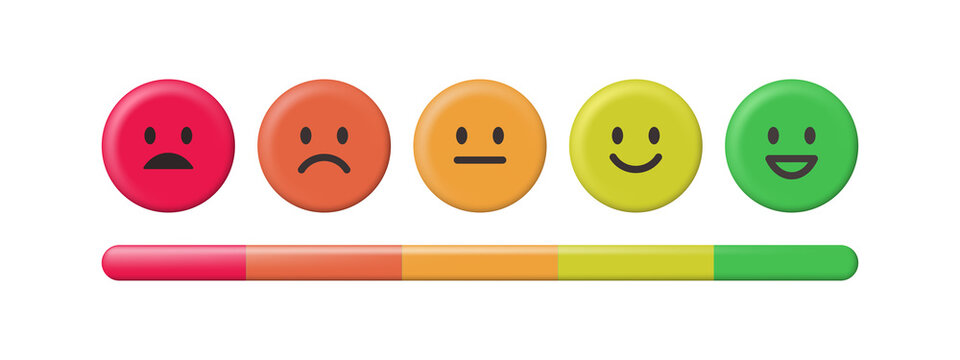
An important part of market research for researchers is the ability to understand the opinion of respondents toward a brand, feature, product, service and more. This measuring of opinion helps to measure the level of changes required. Using a quantitative analysis data collection tool, known as a Likert scale, in your research process allows you to understand the respondent’s sentiments and opinions.
In this blog, we will explore what is a Likert scale, understand when you should use this tool and see how you can utilise it to create an accurate and insightful assignment.
Table of Contents
What is a Likert Scale?
A Likert Scale is a rating scale that is used to measure opinions, attitudes or behaviours. It comes in the form of a question or a statement, followed by a series of answer statements. Respondents need to choose the option that best describes how they feel about the question or statement.
As the Likert scale provides students with a range of possible answers, they are great for capturing the level of agreement or respondents’ feelings on the topic in a more nuanced way. However, Likert scales can be prone to response bias, where respondents either agree or disagree with all the statements due to social desirability, fatigue or a tendency toward extreme responding.
What are Likert Scale Questions?
Generally, the Likert Scale has five or seven options. The options on each end are known as response anchors. The midpoint is neutral, with negative and positive options on each side. The format of a typical five-level Likert question, for example, could be:
- Strongly disagree
- Disagree
- Neither agree nor disagree
- Agree
- Strongly agree
Additionally, the Likert scale is also used to measure other spectrums, such as frequency, satisfaction or importance.
Type of Likert Scales
The Likert Scale is divided into two major types:
- Even Likert Scale
- Odd Likert Scale
Even Likert Scale
Even Likert Scales are used when the researcher needs to collect extreme feedback without providing a neutral option.
- 4-Point Likert Scale: This is a type of Likert scale that includes four extreme options without a neutral choice.
- 8-Point Likert Scale: This is a variation of the 4-point Likert scale, the difference is that this scale has 8 options.
Odd Likert Scale
Odd Likert Scales are used to give respondents a choice of responding neutrally.
- 5-Point Likert Scale: This type of Likert scale includes 5 options including a neutral answer for respondents if they don’t wish to answer from the extreme choices.
- 7-Point Likert Scale: the 7-point Likert scale adds two more answer options at the extreme ends of a 5-point Likert scale question.
- 9-Point Likert Scale: this type of Likert scale is quite uncommon, but it can be used by adding two more answer options to the 7-point Likert scale.
When to Use Likert Scale Questions
Likert scale questions are used when you are seeking a greater degree of nuance than you will get from a simple “yes or no” Likert scale question.
For example, Let’s say you are conducting a survey about customer views on dish-washing soap. You will ask the survey respondents “Are you satisfied with the cleaning ability of the soap you purchased?”
- Yes
- No
The question asked above provides very limited information. There is no way to tell how satisfied or dissatisfied customers really are. This is where the Likert scale comes in. You can get more targeted and interesting information by asking a Likert scale question instead:
“How satisfied are you with the cleaning ability of the soap you purchased?”
- Very Dissatisfied
- Dissatisfied
- Unsure
- Satisfied
- Very Satisfied
Likert scales are most useful to measure unobservable individual characteristics, or characteristics that have no concrete and objective measurement.
How to Write Strong Likert Scale Questions
Each Likert scale-style question should inquire about a single trait or attitude. It is important to write your question precisely to get accurate results. make sure that each question measures only one aspect of your topic.
Here are some pointers you should remember when you are writing Likert scale-style question:
Include Both Questions and Statements
A good way to keep your respondents engaged is to use both questions and statements. When you are phrasing your questions and statements, make sure they are easy to understand and do not bias your respondents in one way or another.
Use Both Positive and Negative Framing
If all your questions are phrased in socially desirable ways, then your respondents may be biassed towards agreeing with all of them to show themselves in a positive light.
|
Positive framing |
Negative framing |
|
Environmental damage caused by plastic shopping bags is a serious problem.
|
Banning plastic shopping bags is pointless for reducing environmental damage.
|
Respondents who agree with the first should also agree with the second. You can make sure that respondents’ responses are reliable and consistent by including both positive and negative questions/statements in a long survey.
Avoid Double Negative
Try avoiding double negatives as questions like these may lead to confusion and misinterpretations, as respondents may not be sure of what they are agreeing or disagreeing with.
|
Bad Example |
Good Example |
|
I never buy non-organic products.
|
I mostly try to avoid buying non-organic products.
|
Ask About Only One Thing at a Time
Asking about two different topics in the question can lead to confusion leading them to choose the neutral option in order to answer both questions simultaneously. It can also lead to the respondents selectively answering about one topic and ignoring the other.
Be Crystal Clear
The accuracy of your data totally depends on your word choice. Hence, it is important to pose your questions clearly, make your language and stylistic choice resonate with your target demographic and stay away from difficult and unnecessary terminologies that can confuse the respondents.
Conclusion
The Likert-scale survey is a technique used for gauging feedback and information. These questions/statements measure the opinion and attitude of a respondent toward a specific topic which is then used in the later part of the research.
If you are working on your research and need help with the Likert scale or the overall project, contact Assignment Studio and our experts will help you resolve your issue and help you write a top-notch paper.







